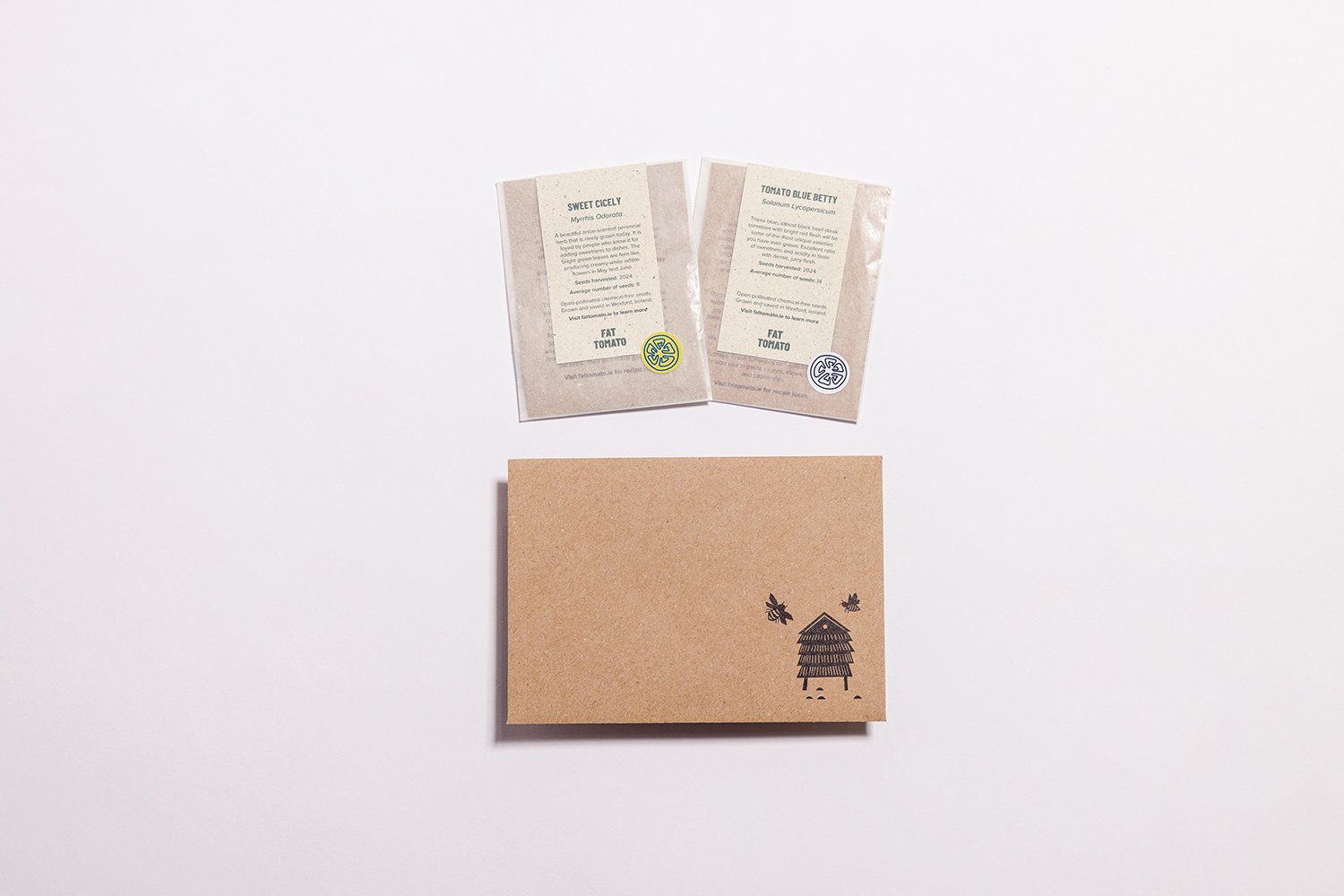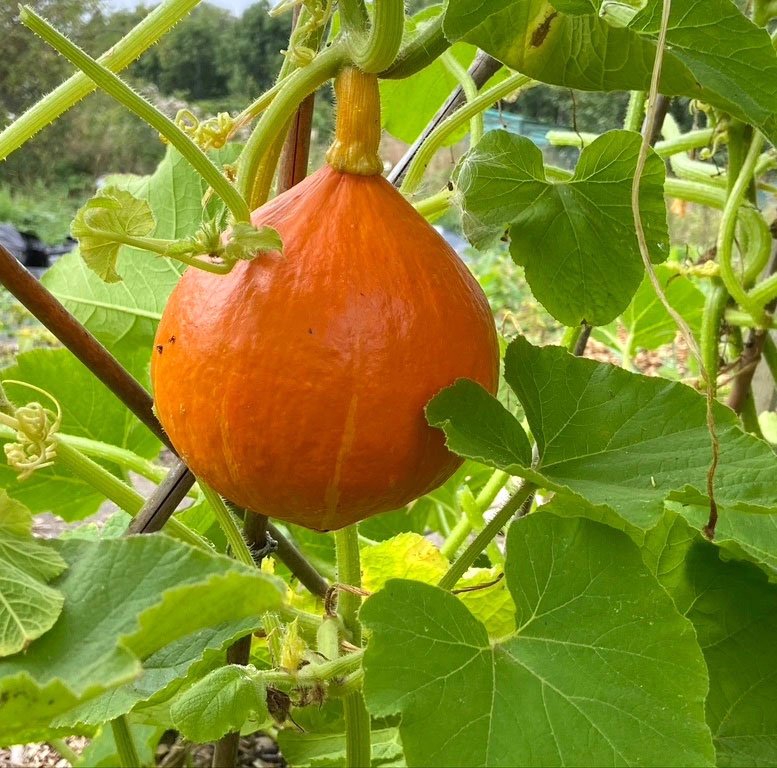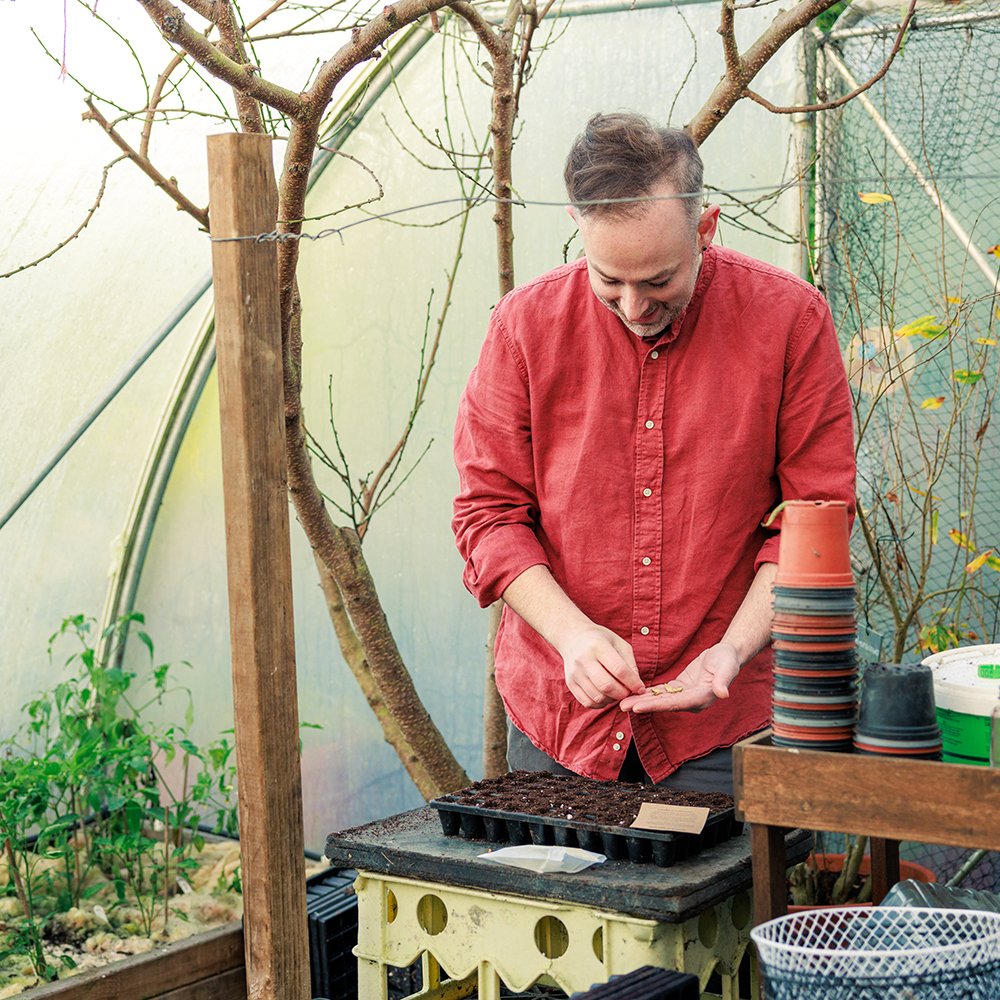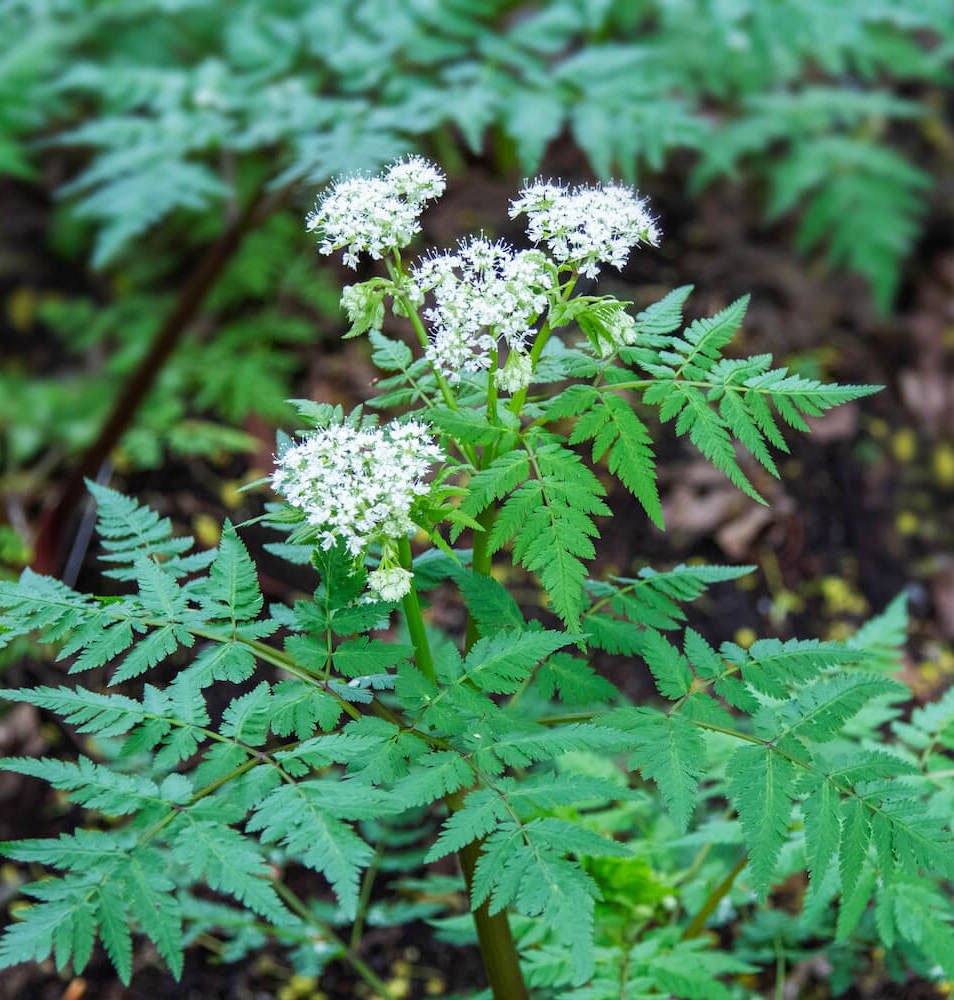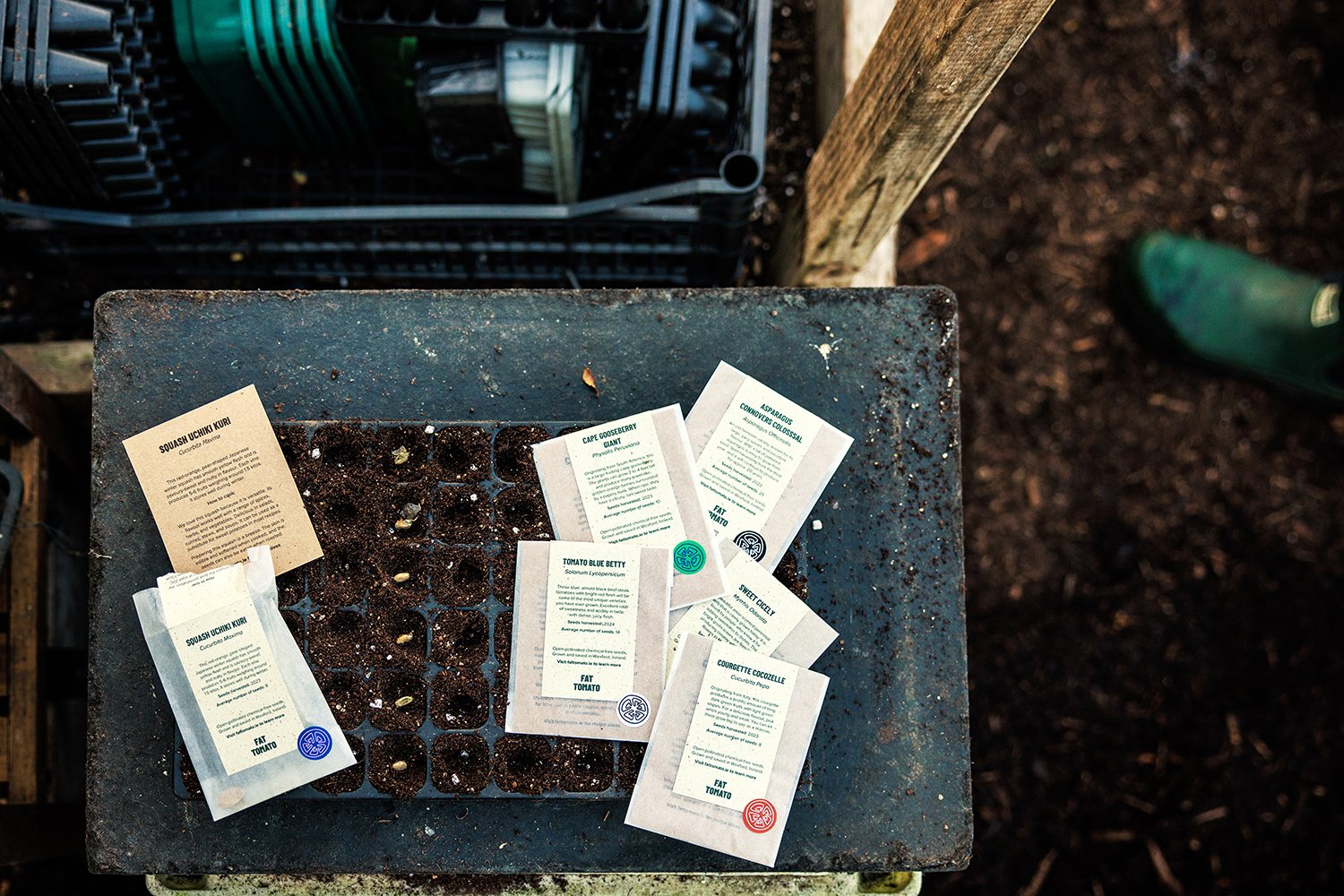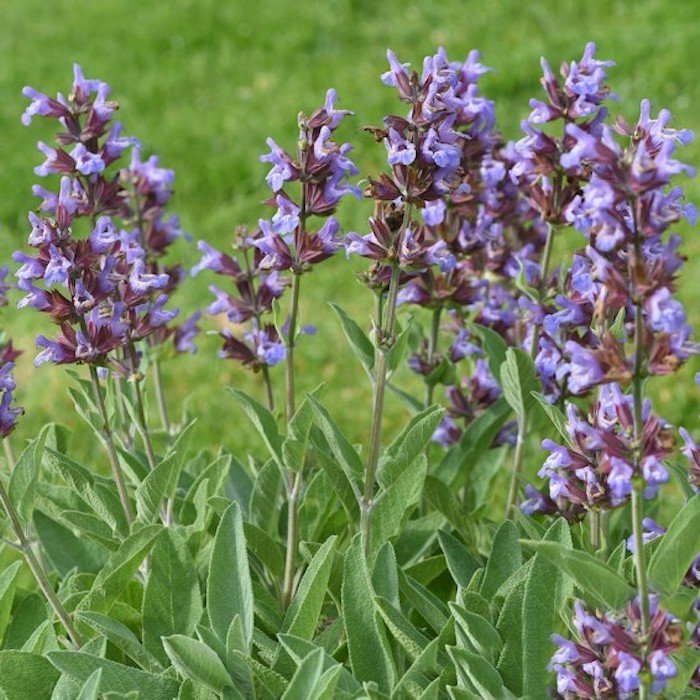Cape Gooseberry Pineapple Seeds
Physalis Peruviana
Originating from South America, the Pineapple variety adds a tropical twist to the classic cape gooseberry. It produces small, golden-orange berries with a sweet-tart flavour. These robust plants grow over a metre tall and yield up to 200 fruits per plant. They flourish in sunny spots and perform best in a polytunnel or glasshouse. Harvest when the husks turn brown, and the fruit falls away.
Average number of seeds: 10
Open-pollinated chemical-free seeds. Grown and saved in Wexford, Ireland. We only grow and save seeds from plants that were started from certified organic seeds.
Our seed packet includes growing tips and suggestions for cooking.
Physalis Peruviana
Originating from South America, the Pineapple variety adds a tropical twist to the classic cape gooseberry. It produces small, golden-orange berries with a sweet-tart flavour. These robust plants grow over a metre tall and yield up to 200 fruits per plant. They flourish in sunny spots and perform best in a polytunnel or glasshouse. Harvest when the husks turn brown, and the fruit falls away.
Average number of seeds: 10
Open-pollinated chemical-free seeds. Grown and saved in Wexford, Ireland. We only grow and save seeds from plants that were started from certified organic seeds.
Our seed packet includes growing tips and suggestions for cooking.
Physalis Peruviana
Originating from South America, the Pineapple variety adds a tropical twist to the classic cape gooseberry. It produces small, golden-orange berries with a sweet-tart flavour. These robust plants grow over a metre tall and yield up to 200 fruits per plant. They flourish in sunny spots and perform best in a polytunnel or glasshouse. Harvest when the husks turn brown, and the fruit falls away.
Average number of seeds: 10
Open-pollinated chemical-free seeds. Grown and saved in Wexford, Ireland. We only grow and save seeds from plants that were started from certified organic seeds.
Our seed packet includes growing tips and suggestions for cooking.
-
For best germination, ensure the temperature is at least 18°C. Fill small modular trays with peat-free seed compost and sow seeds 1-2cm deep. Plant out 50cm apart. Can be grown undercover or outdoors from late May to avoid frosts. Support with string or bamboo.
Sow indoors: February to April
Plant out: Late May to July
Harvest: August to November
Check out our Grow & Cook section for more growing tips.
-
As well as making an attractive garnish for cocktails and desserts, cape gooseberries can be used in pies, puddings, and ice cream. They’re delicious in jam, jelly, or chutney, paired with cheese and cold meats. We love making cape gooseberry curd and serving it on a crunchy-sweet Pavlova.
Check out our Grow & Cook section for more cooking ideas.
-
Check our frequently asked questions page for answers to all those questions you might have.
If you have a specific question, feel free to reach out to us at hello@fattomato.ie



